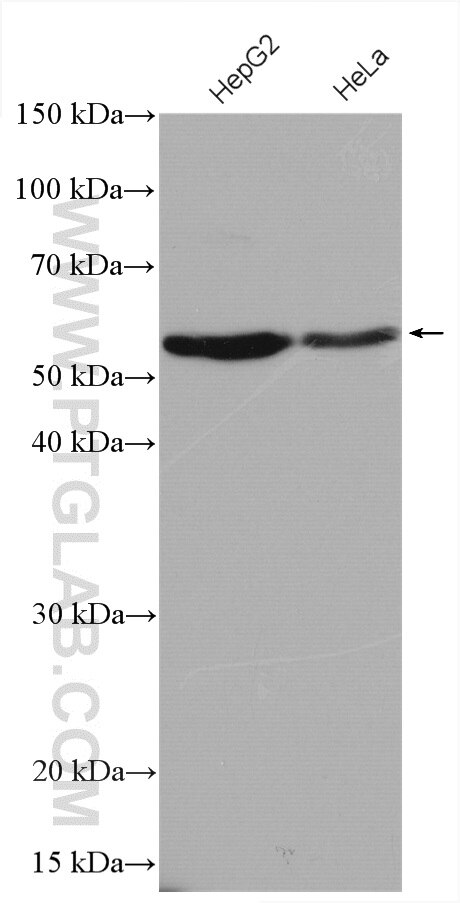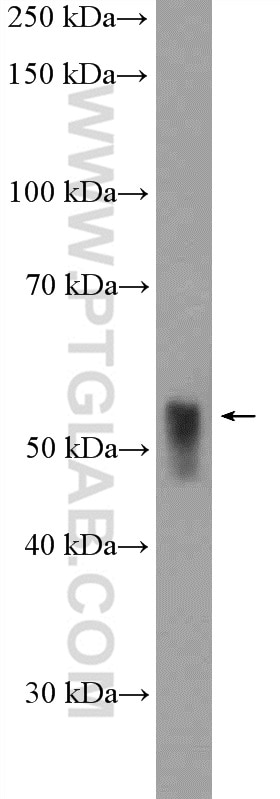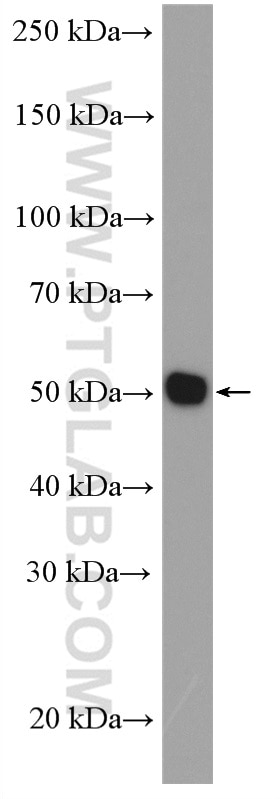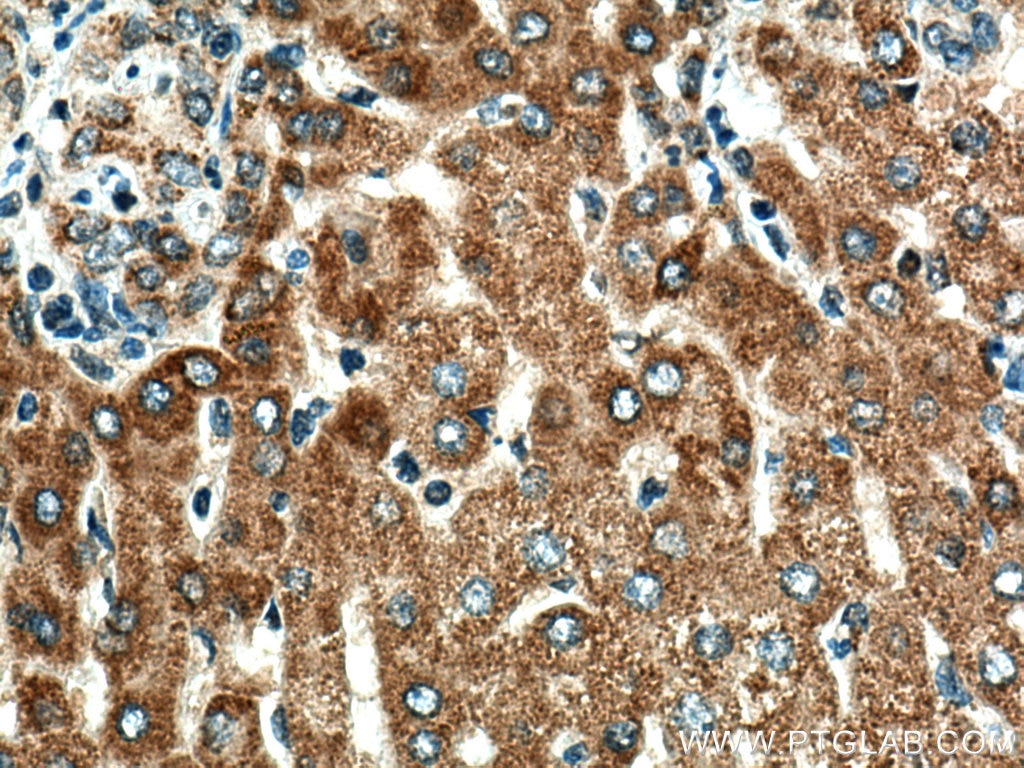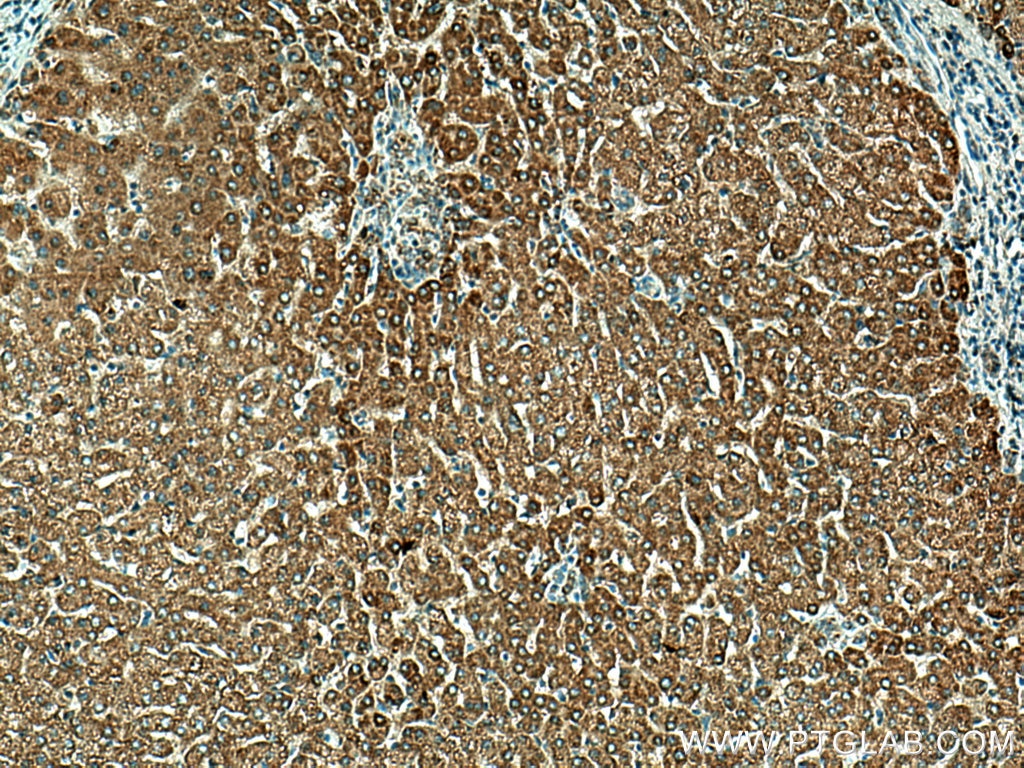Anticorps Polyclonal de lapin anti-TXNRD2
TXNRD2 Polyclonal Antibody for WB, IHC, ELISA
Hôte / Isotype
Lapin / IgG
Réactivité testée
Humain, rat, souris et plus (1)
Applications
WB, IHC, IF, ELISA
Conjugaison
Non conjugué
N° de cat : 16360-1-AP
Synonymes
Galerie de données de validation
Applications testées
| Résultats positifs en WB | cellules HepG2, cellules HeLa, cellules MCF-7, tissu hépatique de rat |
| Résultats positifs en IHC | tissu hépatique humain, il est suggéré de démasquer l'antigène avec un tampon de TE buffer pH 9.0; (*) À défaut, 'le démasquage de l'antigène peut être 'effectué avec un tampon citrate pH 6,0. |
Dilution recommandée
| Application | Dilution |
|---|---|
| Western Blot (WB) | WB : 1:1000-1:6000 |
| Immunohistochimie (IHC) | IHC : 1:50-1:500 |
| It is recommended that this reagent should be titrated in each testing system to obtain optimal results. | |
| Sample-dependent, check data in validation data gallery | |
Applications publiées
| KD/KO | See 1 publications below |
| WB | See 14 publications below |
| IHC | See 1 publications below |
| IF | See 1 publications below |
Informations sur le produit
16360-1-AP cible TXNRD2 dans les applications de WB, IHC, IF, ELISA et montre une réactivité avec des échantillons Humain, rat, souris
| Réactivité | Humain, rat, souris |
| Réactivité citée | rat, Humain, porc, souris |
| Hôte / Isotype | Lapin / IgG |
| Clonalité | Polyclonal |
| Type | Anticorps |
| Immunogène | TXNRD2 Protéine recombinante Ag8367 |
| Nom complet | thioredoxin reductase 2 |
| Masse moléculaire calculée | 524 aa, 56 kDa |
| Poids moléculaire observé | 54 kDa |
| Numéro d’acquisition GenBank | BC007489 |
| Symbole du gène | TXNRD2 |
| Identification du gène (NCBI) | 10587 |
| Conjugaison | Non conjugué |
| Forme | Liquide |
| Méthode de purification | Purification par affinité contre l'antigène |
| Tampon de stockage | PBS with 0.02% sodium azide and 50% glycerol |
| Conditions de stockage | Stocker à -20°C. Stable pendant un an après l'expédition. L'aliquotage n'est pas nécessaire pour le stockage à -20oC Les 20ul contiennent 0,1% de BSA. |
Informations générales
Human mitochondrial thioredoxin reductase (TXNRD2) is a selenocysteine-containing enzyme essential for mitochondrial oxygen radical scavenging. Three mammalian thioredoxin reductases exist; a cytosolic (TXNRD1), a mitochondrial (TXNRD2), and a testis-specific thioredoxin reductase (TXNRD3). (PMID: 21247928, PMID: 26199228)
Protocole
| Product Specific Protocols | |
|---|---|
| WB protocol for TXNRD2 antibody 16360-1-AP | Download protocol |
| IHC protocol for TXNRD2 antibody 16360-1-AP | Download protocol |
| Standard Protocols | |
|---|---|
| Click here to view our Standard Protocols |
Publications
| Species | Application | Title |
|---|---|---|
Adv Sci (Weinh) Identification of PRDX5 as A Target for The Treatment of Castration-Resistant Prostate Cancer | ||
Nat Chem Biol Ribosome stalling during selenoprotein translation exposes a ferroptosis vulnerability. | ||
Oxid Med Cell Longev Paeoniflorin Upregulates Mitochondrial Thioredoxin of Schwann Cells to Improve Diabetic Peripheral Neuropathy Indicated by 4D Label-Free Quantitative Proteomics. | ||
Antioxidants (Basel) Selenium Status in Diet Affects Nephrotoxicity Induced by Cisplatin in Mice. | ||
J Biol Chem Redox regulation by TXNRD3 during epididymal maturation underlies capacitation-associated mitochondrial activity and sperm motility in mice. | ||
Sci Rep Selenocysteine insertion sequence binding protein 2 (Sbp2) in the sex-specific regulation of selenoprotein gene expression in mouse pancreatic islets. |
